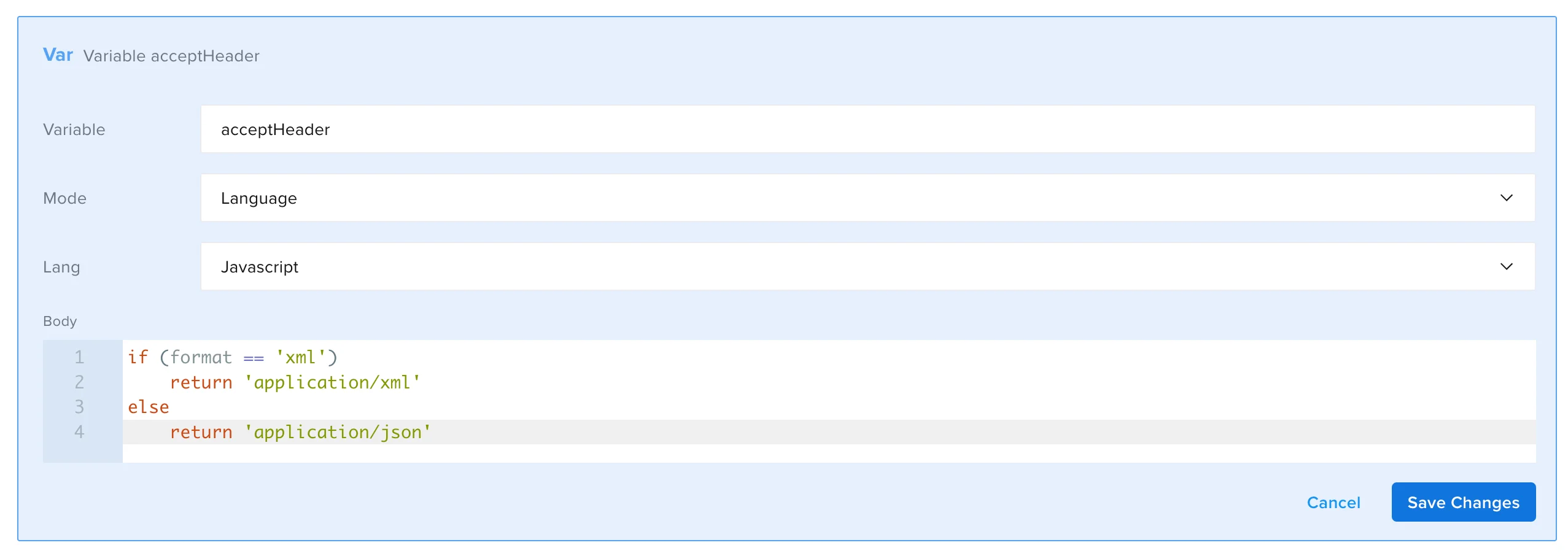Creating Dynamic Headers
Most APIs have only one response format, either JSON or XML. But what should you do when an API endpoint can return either JSON or XML? You could write two different tests, one for each response type, but you would be repeating a good amount of code in both tests.
Sauce Labs API Testing allows you to test both, using the same test for almost all test cases. In a few cases, you will need to add extra logic to allow the platform to distinguish between the two formats.
What You'll Need
- A Sauce Labs account (Log in or sign up for a free trial license).
- An existing API Testing Project. For details on how to create one, see API Testing Quickstart.
- Familiarity with the API Testing Composer.
Example: Sending Different Header Based on the Response Type
Consider a scenario where you need to pass the Accept value in the Header that is application/json if you are testing the JSON and application/xml if you are testing the XML. Usually in this case, you should make two different calls, to be able to pass the different values in the header.
The image shows the above scenario which requires setting up two separate calls. This solution is not particularly adherent to the Don't Repeat Yourself (DRY) rule of programming.

The solution is the following:
-
In the Input Set add the different formats as variables.

-
Remove one call and add the format variable in the Mode input.

-
The header is still static. You need to turn it into a dynamic one that changes to suit the data type of the API you are testing. Above the I/O operation, add the Set (Variable) component that will return the appropriate value.
if (format == 'xml')
return 'application/xml'
else
return 'application/json'
The
acceptHeadervariable will beapplication/xmlif the format is XML andapplication/jsonotherwise: since there are only two different formats, it will beapplication/jsononly for JSON format. -
Remove the static header and add
${acceptHeader}as the Header value.
The final result of the test will look like this:
- id: set
var: acceptHeader
mode: lang
lang: javascript
body: |-
if (format == 'xml') return 'application/xml'
else return 'application/json'
- id: get
children:
- id: header
name: Accept
value: ${acceptHeader}
url: ${protocol}${domain}${endpoint}
var: payload
mode: ${format}
If you run the test, it will be executed two times: once for XML and once for JSON, ensuring that the header will have the correct value.